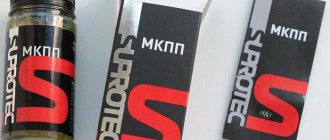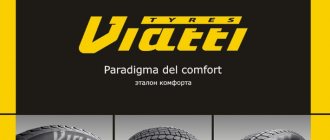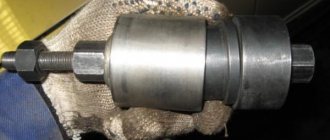What are silent blocks?
This part is a hinge, which consists of two metal bushings, the space between them is filled with rubber. There are models of silent blocks that do not have an outer metal shell. This hinge connects the suspension parts together. When the car moves along the road, vibrations occur in the suspension parts, which are damped by the rubber inserts of the silent blocks. Such hinges are installed on the front and rear suspensions of vehicles.
In addition, they are used to secure the gearbox to the car body. They are also used to install shock absorbers. At first glance, the detail seems simple, but the car’s handling, ride comfort, and the safety of the driver and passengers depend on it. The elastic insert of this unit can be made of rubber or polyurethane. The load on these parts when the car is moving is large, so their condition needs to be monitored when performing maintenance.
Silent blocks: types and features
The main element of the suspension of any car is silent blocks, the purpose of which is to ensure soft and comfortable movement and reduce noise. The presence of this spare part allows you to reduce the shock loads that fall on the car body.
The design is quite simple, it consists of two durable metal bushings and an elastic insert. The insert can be rubber or polyurethane and provides shock absorption.
Silent blocks are constantly subject to heavy loads and wear, so it is important to carefully monitor their condition.
In a car, there are silent blocks for front and rear suspension arms, rods, torque rods, stabilizers and subframes. Basically, the silent block of the front lever and suspension fails, since the main part of the load falls on them.
When using the vehicle intensively and driving on high-quality roads, it is recommended to change the part every 100 thousand kilometers. It is worth noting that polyurethane is colorless, and dyes are added for a simplified determination of hardness.
Silent blocks made of polyurethane can be floating, but motorists have differing opinions about their advantages.
What kind of material is polyurethane?
Many experts say with great confidence that polyurethane is a material with a great future. It can work successfully not only in normal conditions, it is not at all afraid of extreme conditions.
A few words about the properties of this material
Polyurethane is based on two different types of raw materials. For its production, synthetic materials are used: polyol and isocyanate. It belongs to the group of polyether polyols, which means that its technical characteristics depend entirely on its molecular structure. Polyurethane is endowed with high elasticity, which allows it to return to its original state when stretched, bent, or other types of deformation. Various additives helped him obtain such properties. The material may be in different states:
- Viscous liquid.
- Soft rubber.
- Hard plastic.
The elasticity of a material can also range from very low to high. Polyurethane does not change its state when exposed to low or high temperatures. He is not afraid of mechanical influences. The material is not afraid of exposure to chemical solutions, technical fluids, motor oil, and ultraviolet radiation. It is used in the manufacture of aircraft, the construction of various facilities, and the manufacture of hydraulic systems.
Technical indicators
The excellent technical data of this material have made it acceptable for use in many industries, where the characteristics of the product used must be resistant to wear, have good resistance, the ability to work in an aggressive environment, resistance when working in conditions of low or high temperatures in the area of use or aggressive environment.
- the density of the material is in the range of 30–300 kg/m3;
- hardness indicators (Schor scale A, D) are 50–98 units. The material can be used for components with high mechanical loads;
- The operating temperature range is in the range from -600C to +800C. In some cases, during short-term use, the temperature can be up to 1400C;
- tensile strength can reach a limit of 50 MPa;
- good dielectric;
- the low density of the material makes its mass significantly lower compared to analogues from other materials;
- high resistance to ozone;
- It is possible to program the friction coefficient.
It is impossible to note the presence of some shortcomings. These include:
- It does not allow air to pass through, which excludes its use for the shoe industry.
- Foam parts shrink, making it difficult to apply a high-definition pattern.
- When exposed to low temperatures for a long time, it becomes brittle and too hard.
- Poor resistance to twisting.
- It is almost impossible to recycle polyurethane products.
What is a silent block and how does it work?
For a comparative assessment of rubber and PU, it is important to understand the principle of operation of the element. The silent block used in car suspension is a “dry” hinge consisting of 3 parts:
- internal steel sleeve with thick walls;
- outer metal shell;
- the space between them is filled with elastic material (elastomer).
Note: The joint is called dry because it functions without the use of lubricant.
The front and sometimes the rear wheels of the car are attached to the body using a strut-lever system. To absorb vibrations from unevenness, the latter must rotate on its axis, which is what silent blocks provide. Their outer shell is pressed into the body of the lever, and the inner bushing is put on the axle and clamped on both sides with nuts. That is, the metal parts of the hinge are tightly fixed and do not rotate while the car is moving.
Thanks to this method of fastening, the part performs 2 tasks:
- The main thing is to ensure the movement of the lever on the axis without friction and any lubrication. This is the principle of operation of the silent block - the outer and inner bushings are able to rotate relative to each other only due to the elasticity of the material inserted between them.
- Secondary - to soften and reflect small impacts on the suspension so that they are not transmitted to the steering wheel. Here, too, the properties of the elastomer play a major role.
Article on the topic: 2009-mercedes-benz-sl-class-studio-front-section-top
At the moment, polyurethane or rubber made from synthetic rubber is used to make the middle part of the hinge. The latter is reliably welded to the metal parts of the element using vulcanization. The elastomer, made of PU, is pressed and pinched between steel shells, which prevents it from turning on the bushing.
Purpose of silent blocks and why they fail
The hinge, which combines a rubber insert and one or two metal clips, is a silent block. On cars it is installed to dampen axial, radial, cardan and other vibrations. This ensures high mobility in the front or rear suspension units, thereby compensating for the resulting vibrations or vibrations. Depending on the type of suspension where this unit is installed, it may have two or only one internal metal clip.
Manufacturers guarantee the mileage of silent blocks is approximately 100,000 thousand km. In reality, the service life may be somewhat shorter, it depends on many factors:
- Terms of Use.
- The degree of load on the vehicle's suspension.
- Work in low temperature conditions with a sharp transition to high temperatures.
- Possible contact with aggressive chemicals.
- Damage from mechanical impact.
The wear process is accelerated by a violation of the tightness of the unit, which facilitates the penetration of moisture, dirt, and chemical elements after treating the road surface. Changes for the worse in the performance of suspension silent blocks will appear soon after this. At low temperatures, water begins to expand and tear the rubber. The corrosion process on the metal bushings of the units is also accelerated. The following symptoms indicate that the time to replace problematic parts is approaching:
- The appearance of previously unheard knocks.
- The car's handling changes for the worse.
- Tires wear unevenly.
- The appearance of vibration in the car interior.
If even one of the listed signs appears, the vehicle owner should pay attention to the condition of the suspension components, including silent blocks.
Which silent blocks are better, rubber or polyurethane?
Some time ago, the question of choosing types of silent blocks did not arise for car owners at all. The industry offered only one type of these units, the elastic element of which was rubber. It is this part of the part that most often fails. Leading manufacturers of automobile parts are constantly searching for materials to replace rubber in suspension units with better and more durable ones. One such material is polyurethane.
Most car enthusiasts prefer to use familiar products that have been used for a long time with tires that have already proven themselves. Retail chains offer them in large quantities from different manufacturers. Almost all cars that come off the assembly line have silent blocks with a rubber elastic element. Drivers with extensive experience in using cars prefer products with rubber in the product.
The appearance of anything new is always accepted with caution and distrust, and this fully applies to the automotive industry. The appearance of polyurethane as an elastic element in vehicle suspension parts has been met with some distrust among car enthusiasts. In various sources you can find both positive and negative statements from drivers about new products. To choose one or another type of product, you should take into account the region where the vehicle is used.
There are known cases where polyurethane, frozen at low temperatures, turned in metal bushings. No such facts were observed with the rubber elastic element. Experts also note that polyurethane is not suitable for suspensions in which the arms have a long stroke. In this case, the elasticity of the material may not be enough to turn at a large angle, and the suspension will begin to creak.
Polyurethane and rubber silent blocks: pros, cons, comparison
Where the roads leave much to be desired (as in Russia, for example), problems have always arisen with the suspension. There’s really nothing you can do about such an inconvenience, you can only hope that the chassis will hold up. Let's talk about one detail today. Silent blocks - a rubber-metal part of the chassis, softens the force of the shock wave from the wheels to the axle (works as a shock absorber). Thanks to this detail, the ride on uneven surfaces is softened.
New types appear As the auto industry developed, and the roads remained the same, other types of silent blocks appeared. For example, polyurethane silents, which came as an alternative to rubber ones.
Progress does not stand still and analogues of classic rubber silents are constantly appearing. One of which is polyurethane. There are differing opinions regarding its use. In this article you will see all the pros and cons of polyurethane blocks, then you will be able to make a purchasing decision, and we will also summarize.
About the polyurethane silent block
Let's talk about where polyurethane silents came from. They are popular (and perhaps also invented) in Russia, since it is in Russia that ordinary rubber bursts and becomes unusable due to excessive loads. As a rule, it bursts on time two times faster than expected.
The originals are quite expensive in price, and this is when we are talking about the domestic automobile industry, and the prices of silent cars for foreign cars are a different story.
Polyurethane silent blocks are more durable and durable, and can withstand high loads well. It follows from this that it will last longer, and this results in savings. However, the question may arise: is the game worth the candle? Is everything so good?
At first glance, it seems that the savings are obvious; they are quite strong and durable. However, this comes at the expense of comfort. This, by the way, is one of the reasons why motorists do not like polyurethane.
Polyurethane silent blocks make the suspension more rigid. If before this your car already made you feel all the potholes and bumps, then with the installation of new silencers made of this material, everything can become even worse.
But on soft suspensions (in business class cars), the discomfort will not be so clear. The fact is that the suspension already does not cause discomfort, softening impacts, but with the installation of polyurethane the situation should not change.
Advantages of polyurethane silent blocks Let's look at the advantages of polyurethane silent blocks. All these advantages will be from the point of view of comparison with rubber silents:
• Better resistant to loads;
• Makes the suspension more rigid, collecting it (in some cases this can result in improved handling and maneuverability);
• Longer service life;
• Resistance to temperature changes (rubber may not withstand and crumble/dry depending on the temperature);
• Resistance to chemicals, reagents and petroleum products (all this destroys natural rubber);
Now let's look at the disadvantages of these blocks: • Rigidity*;
• Price**;
• No twisting allowed***.
So let's look at the disadvantages in more detail.
*Rigidity – this can be both a plus and a minus. On cars with a rigid suspension, the latter will become even stiffer, which will affect driving comfort. Bumps and unevenness will become more noticeable. Increased rigidity can also be useless because it does not soften impacts. All this can negatively affect body parts and chassis parts.
**Cost - they are often several times more expensive than rubber blocks (counterfeits are also more expensive, but they may last less than the originals). However, in any case, they will be better than rubber ones; all that remains is to understand the feasibility and cost-effectiveness of the purchase.
***Twisting is unacceptable on polyurethane, even though it is durable and can withstand high loads. However, with certain movements of the lever, the SB may scroll too much.
When polyurethane is not needed Polyurethane silent blocks will be a waste of money if your car has a rigid suspension and you do not want to feel unnecessary discomfort while driving. Also, stiffer silents can rub off softer parts of the chassis, so you need to look at the stiffness. Also, look at the cost; if you don’t have extra money, it’s better not to spend it.
Results: Polyurethane is a good material that can be used in silent blocks due to its properties. However, we do not recommend immediately running out and buying them, replacing tires. Remember all the pros and cons of these two types of silents, and then see if it’s worth it. First of all, look at the price and what kind of suspension your car has.
We also remind you that polyurethane will not necessarily last much longer, it all depends on the individual characteristics of use, as well as on the manufacturer.
You can always replace silent blocks of any type on your car in any of our services.
Is it worth installing polyurethane silent blocks?
This question arises when replacing worn suspension parts. It is not so easy to say “yes” or “no” unambiguously. Car owners are attracted by the high wear resistance of polyurethane, but are frightened by the cost, which is higher than products with a rubber elastic element of silent blocks. Further, the choice of type of suspension unit is influenced by the region of operation of the vehicle, driving conditions, road conditions, and type of vehicle. Polyurethane may have a different effect on different drivers. It will be just right for one car owner, as the suspension will become stiffer, the car will be easier to control, and there will be stability when cornering.
Other drivers like a softer suspension and high comfort on long trips, even on poor-quality road conditions. If the car is operated in areas with low temperatures in winter, preference should be given to products with a rubber elastic element in the silent block. If the owner wants to significantly increase the life of the chassis, he should opt for products made of polyurethane.
Pros and cons of polyurethane silent blocks
Before choosing one or another type of silent blocks (with a rubber or polyurethane elastic element), you should carefully study the technical characteristics of the products, reviews of specialists, and drivers. Polyurethane in suspension components has its advantages and disadvantages. The advantages include the following facts:
- When using polyurethane, the suspension becomes more rigid, or rather, the movement of the car becomes more stable.
- The service life of polyurethane is much longer than even high-quality rubber.
- Polyurethane is not afraid of exposure to aggressive chemical environments, motor oil, and technical fluids.
This is where the advantages end. The disadvantages include the following:
- High rigidity reduces ride comfort.
- In low temperature conditions, there have been cases where polyurethane cracked.
- Metal bushings wear out faster during vehicle operation.
- There have been cases where the material has peeled off from the metal bushings.
Taking this into account, the driver must choose one or another type of silent blocks.
Differences between polyurethane bushings and rubber bushings
Parts are made from various materials. They have a wide range of physical and mechanical characteristics:
- Polyurethane is a heterochain polymer whose macromolecule contains an unsubstituted and/or substituted urethane group.
- Rubber is an elastic substance that is obtained by vulcanizing rubber (natural or synthetic) with the addition of sulfur. Depending on the concentration of the latter, it is divided into soft, semi-solid and hard.
The chemical industry allows you to vary the composition to obtain the desired qualities of materials. An indicator of mechanical rigidity is hardness, which comes in a wide range. It is measured using a Durometer using the Shore method. To do this, a special indenter is pressed into the part and the penetration depth is determined - the greater it is, the lower the hardness. Its value for polyurethane ranges from 45 to 95 Shore units on the A scale.











